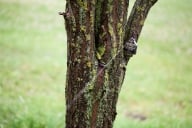You have /5 articles left.
Sign up for a free account or log in.
Architecture professors at the University of Virginia, an architectural gem among colleges, are giving failing grades to some of its newer buildings.
Twenty-four architecture faculty members signed an open letter that appeared Wednesday as an advertisement in The Cavalier Daily and criticized newer buildings on campus, as “mediocre,” and “a faux Jeffersonian architecture, confused between style and substance.”
The faculty members contend that buildings that have been erected on campus over the last two decades have done a disservice to the Jeffersonian style -- Thomas Jefferson founded the university in 1819 and designed the original campus – by attempting to make look-alikes and by paying too little attention to the use of buildings.
"We have one of most respected architecture schools in the country, and we have design and practices on the grounds we can’t have our students look at as exemplary,” said Elizabeth Meyer, an associate professor in the School of Architecture’s landscape department. “There’s something sad about that.”
Architecture professors say that the university has given in to pressure from donors who want all buildings to mimic the “brick with white trim” look, according to Meyer. But the professors who signed the letter say the new buildings are a mockery of Jeffersonian classicism, rather than a fitting tribute.
Robin Dripps, an architecture professor, used the John Paul Jones Arena, a basketball facility under construction, featuring white columns, as an example. “The classical colonnade is huge. It’s on a scale that is inappropriate structurally and aesthetically,” Dripps said. “It becomes a strange cartoon.”
But classical elements like columns have a strong pull for many at the University of Virginia. “Many people identify with [the columns],” said David Neuman, the university architect. “And even on the arena, with that super scale, I think there’s just this sense of identity, that, for some people, every piece of architecture has to relate to very obviously.”
Neuman has only been on campus for about a year, and said there are a lot of forces pulling in different directions., He acknowledged that major donors do sometimes have more influence on design than do faculty members. “Successful people that can afford to give millions of dollars normally have an opinion,” he said.
Faculty members are also concerned that style concerns come before functionality. “What was truly extraordinary about Jefferson’s work is how it fits the land,” said Meyer, who has loved the campus since she was an undergrad in the 1970s. She talked fondly about Jefferson’s ideal that the famous Lawn become an area that students and professors could use as a central community, for eating, living, and working. “Some of these buildings don’t fit in the landscape, and they only have one use. It’s not efficient,” Meyer said. She cited the Observatory Hill Dining Hall. “It has the brick and white trim, and that’s about all you can say about it,” she said. “It has a very awkward relationship to the land, and it’s for dining, nothing else.”
Neuman noted, however, that John Paul Jones Arena would serve not only as the basketball stadium, but would also hold musicals, circuses, and “probably exhibits.”
The open letter from professors also called for architecture that changes with the times. “Is there a problem is choosing an architecture to stand for the values of a university at the beginning of the twenty-first century when the architecture was inaugurated at an historical moment when racial, gender, social, and economic diversity were less welcome?” the letter reads.
"Jefferson built this campus at very different sociopolitical time,” Dripps said. “You could even claim the Jeffersonian architecture sends very different message to a rural black man or woman, and I think there are issues of sensitivity.” He added that simply “copying” older campus buildings can stifle innovations for sustainable building.
Some faculty members noted that the well-known Polshek Partnership Architects chose to walk away from the South Lawn Project, which was going to add new classrooms and offices. The faculty members said the firm left because its architects did not want to mimic older buildings. But Neuman, who has worked with Polshek before, and was previously an architect at Stanford University, said the parting was mutual, and much more complex than a single issue. The project will continue once another firm is hired.
Neuman said he is glad to have a conversation about the direction of architecture on the campus, and said the senior administration is ready to listen as well. He noted that, over the nearly 180 years since Jefferson died, there have been movements at the university both toward and away from Jeffersonian classicism. “It’s a challenge to navigate,” he said. “Each project has its own set of voices.” As he was talking, he noted that he was looking at a building designed by Stanford White, of McKim, Mead, and White fame, that has been both praised and criticized over the years.








